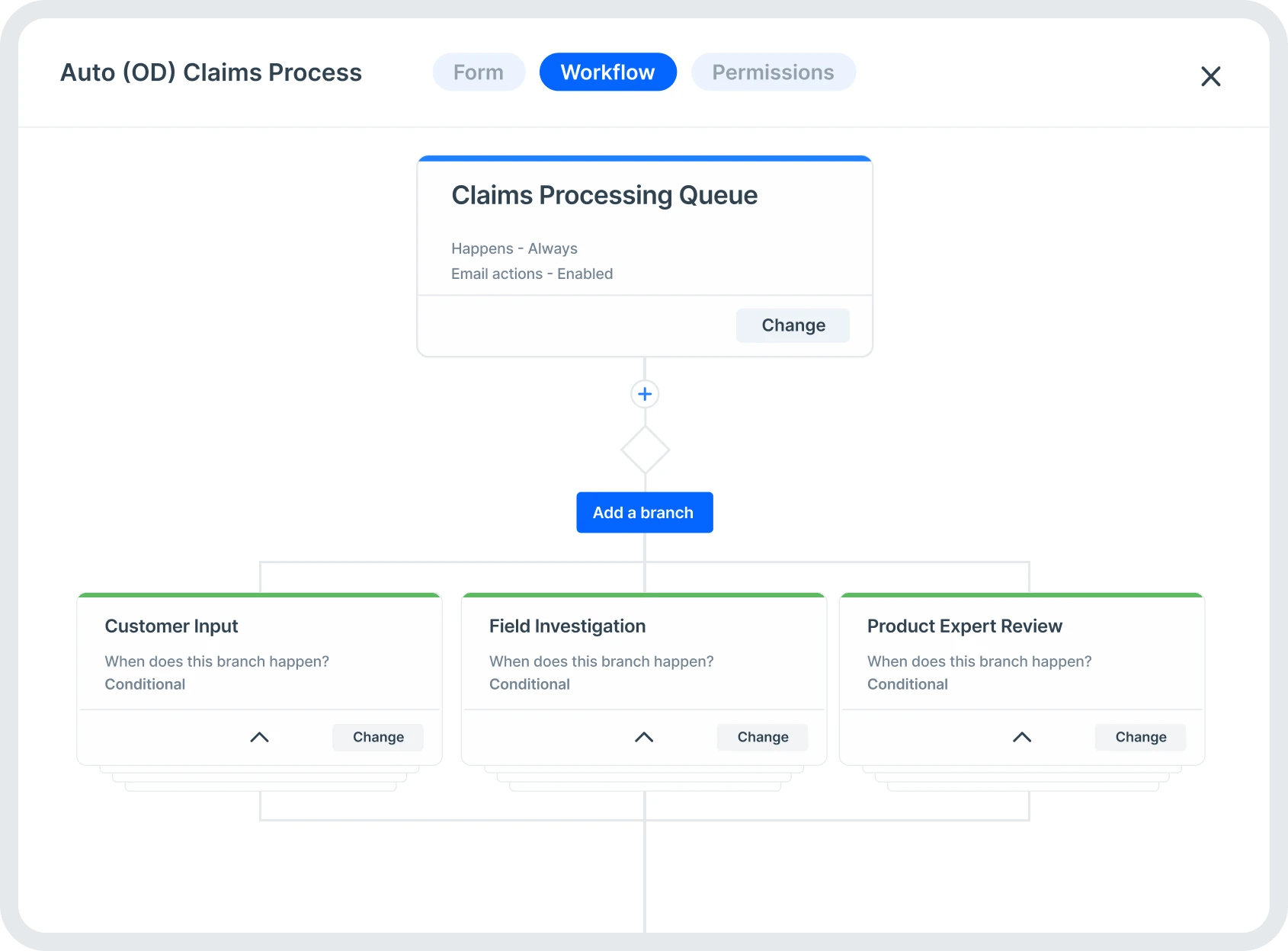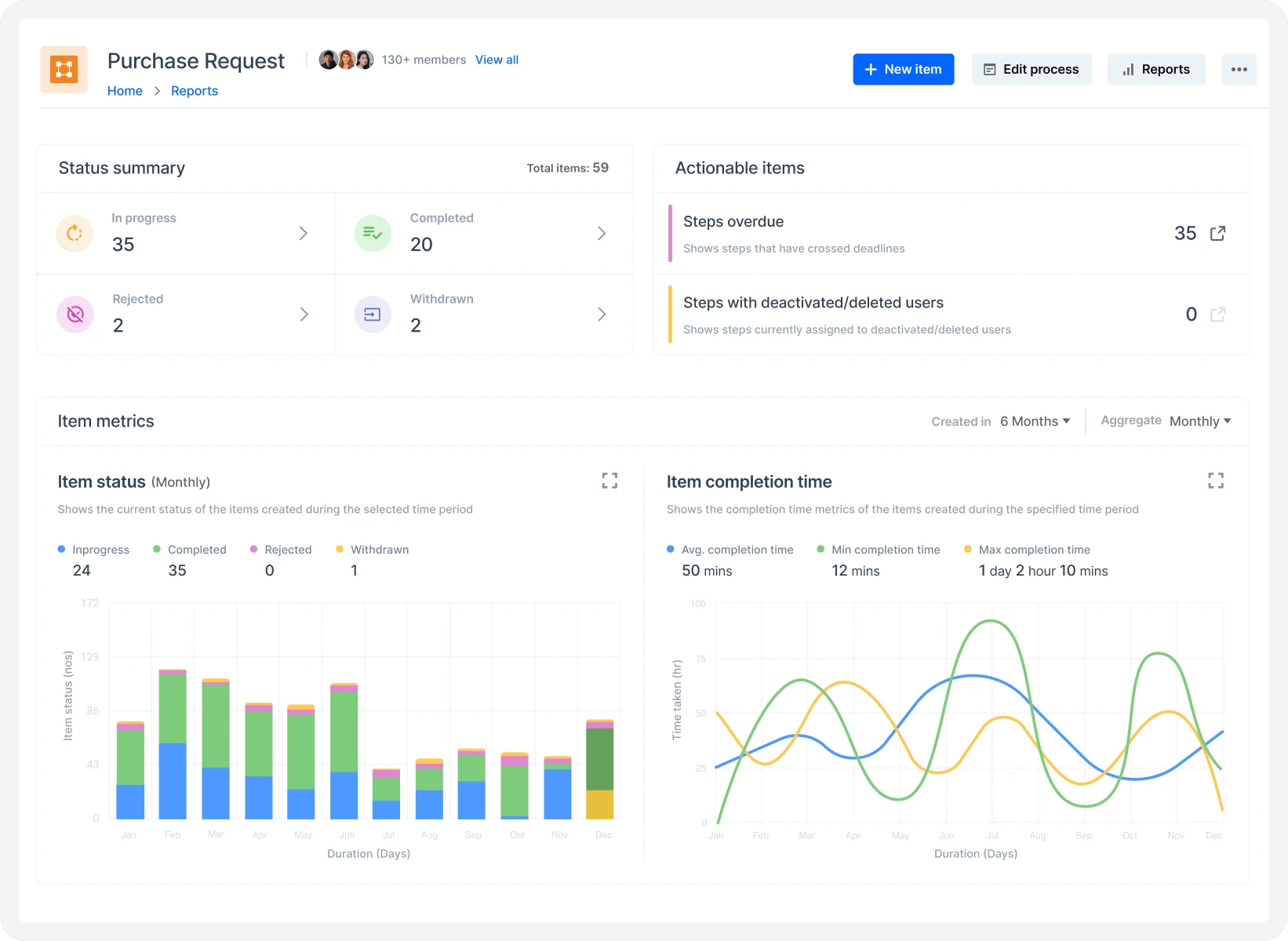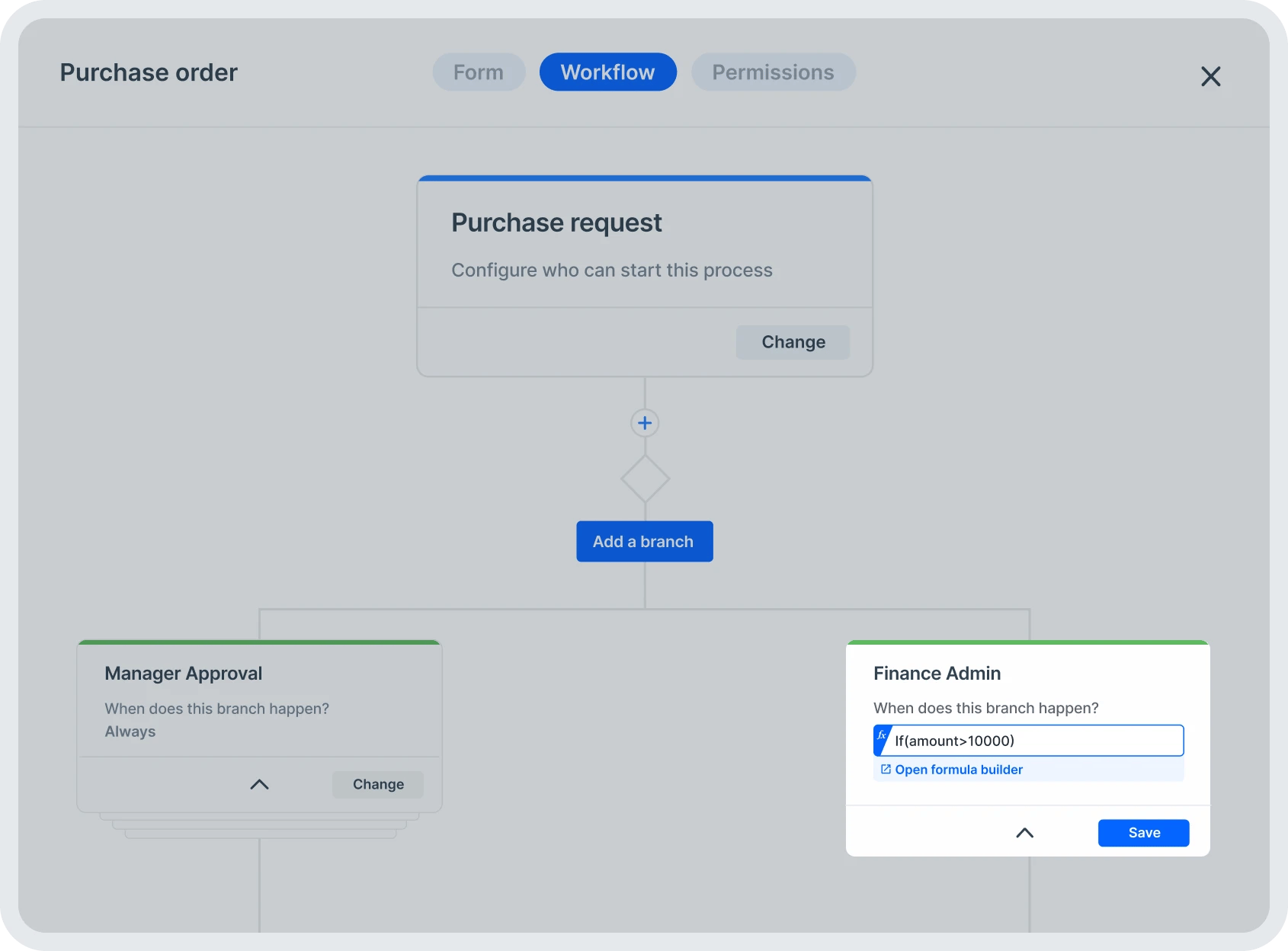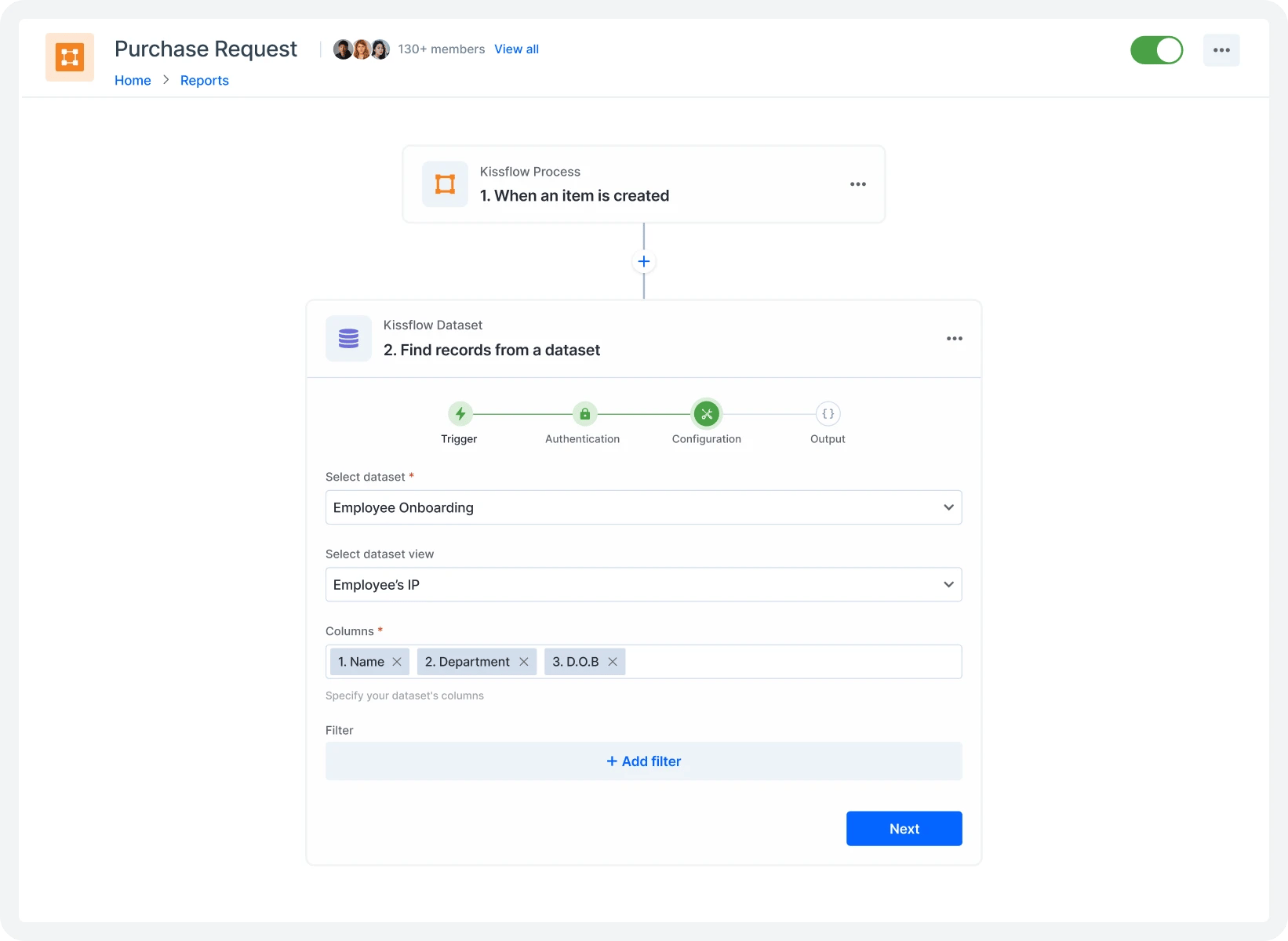BPM Software to Simplify
Workflow Automation
Welcome back,
It's a pleasure to reconnect with you! Check out this eBook for fresh perspectives to drive your digital transformation forward.
Take the AssessmentTrusted by leading brands around the world
Take control of your business processes with Kissflow
Simplify your workflows
Accelerate business process optimization with a form-first strategy using business process management software.

Accelerate internal operations
Enable automation so your team can focus on strategy instead of getting bogged down by manual and repetitive tasks.

Empower business users and IT
Enable process owners and domain experts to customize workflows, with IT only stepping in for the final approval.

Enable easy integrations
Easily integrate workflows with existing databases, applications, and legacy systems in a few steps.





Launch Workflows Faster With
Pre-built Business Apps
Quickly scale and standardize workflows with customizable templates in our business process software.

Employee Management
A pre-built employee management system helps to streamline HR team processes, enhance communication, and improve productivity.
Read More
Expense Management
Manage, track, and control expenses effortlessly with our powerful expense management app.
Read moreBug Tracking System
Simplify bug-tracking management with Kissflow - the power of automation and collaboration to streamline your development process.
Read more
IT Asset Management
IT Asset Management app solves problems like monitoring, tracking, recording and collaborating on digital IT assets.
Read moreDesigned To Democratize Computing
Kissflow vs Traditional BPM
Make the Smarter Choice With Kissflow’s Next-Gen BPM Software

|
Traditional BPM Software |
|---|---|
Intuitive no-code, drag-and-drop builder |
Requires coding knowledge to build workflows |
Lets you build powerful workflows in days, not months |
May take months to implement a workflow fully |
Empowers business users to build and modify processes on their own |
Requires IT intervention for changes or management. |
Basic training can help anyone get started with building apps |
Training employees can be time-consuming and complex |

Intuitive no-code, drag-and-drop builder
Lets you build powerful workflows in days, not months
Empowers business users to build and modify processes on their own
Basic training can help anyone get started with building apps
Traditional BPM Software
Requires coding knowledge to build workflows
May take months to implement a workflow fully
Requires IT intervention for changes or management.
Training employees can be time-consuming and complex
Turn your complexity into productivity with Kissflow
Recognised by Top Industry Leaders

Hear From Our Happy Customers

“Being a retail organization, customer experience is extremely important to us. And we need to be equipped internally to be productive and deliver high results. This is where Kissflow has helped us.”
Muhammad Junaid Budhani
United Motors Group

"Kissflow is not complex, and has really been easy to build our processes on."
Matthew Robinson
YMCA
"The beauty of Kissflow is how quick and easy it is to create the apps I need. It's so user-friendly that I made exactly what I needed in 30 minutes."
Oliver Umehara
Softbank Telecom America








